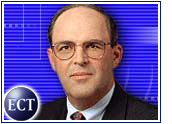The U.S. Department of Commerce has earmarked $175 million (US$) for e-commerce initiatives in its fiscal year 2001 budget, but the proposal faces certain opposition in the Republican-led Congress.
As expected, the Clinton administration is positioning its Commerce Department budget proposal as necessary to carry out White House initiatives for e-commerce. For example, the administration is looking to pour more money into programs to close the so-called “digital divide” between families that have access to the Internet and those who do not.
Clinton laid out his digital divide spending plan last week, as House Commerce Committee Chairman Tom Bliley (R-Virginia) vowed to hold hearings on the issue later this year.
The Commerce Department also outlined several small business e-commerce initiatives in its proposed budget. “One of the Department’s top priorities for FY2001 is to promote e-commerce and take every available step to close the digital divide,” Commerce Secretary William Daley said. “The agency’s budget proposal would bring more people, places, and businesses into the technological mainstream, helping create digital opportunity in the e-commerce revolution.”
Manufacturing Boost
Commerce wants to spend $19 million to help small manufacturers make their businesses e-commerce ready and another $5 million to develop technical standards to make sure e-commerce applications and Internet hardware are more interoperable going forward.
With more than 100 e-commerce-related standards currently under development, the department says the market runs the risk of becoming fragmented. “These funds will allow the Department to work with industry to develop interoperable e-commerce standards, including wireless technologies, and tested methods and procedures to enhance security and reliability at all levels,” the department said.
Of the $19 million slated for small and mid-size manufacturers, $10 million would go toward helping them improve exports over the Internet, which the administration argues would help close trade gaps with some countries. Of that money, $1.6 million would be spent by the department’s International Trade Administration to expand its “virtual trade missions” to enable small and medium-sized enterprises that adopt e-commerce business models to increase exports to global markets.
Supply Chain Toolkits
The other $9 million would be earmarked for the Small Business Administration and the United States Department of Agriculture to provide thousands of manufacturers with e-commerce tool kits. That budget includes $500,000 for the Minority Business Development Agency to increase its e-commerce matching opportunities for minority enterprises.
“With more and more large manufacturers using the Internet for supply chains, small and medium-sized manufacturers who are not connected will find themselves falling behind in the years ahead,” the department warned.
Digital Gap Funds
To boost individuals and families onto the Internet, Commerce is asking for $50 million to provide training, computer equipment and Internet access in the home for low-income families. Commerce also wants to spend $23 million to extend high-speed Internet access to rural communities and poor urban areas.
Under the proposed budget, the department would triple funding to $45 million for its Technology Opportunities Program. The department said the program “encourages innovative ways of using information and communications technology in under-served communities.” In the past, funds under that program have been used to create public health data systems that raise child immunization rates in the inner cities.
Measuring E-Commerce Activities
To make sure everything the department works on next year has some impact, the proposed 2001 budget includes $13 million to track the growth of e-commerce in the United States. The plan would add e-commerce measurements to current economic statistics reports already gathered regularly by various federal agencies.
“Decisions are only as good as the information on which they are based,” the department said. “Traditional categories and measures used within our national economic statistics are inconsistent and/or incompatible with e-commerce. Thus, unless its results are captured in the national statistical measures, we face the possibility of seriously underestimating productivity and growth in our economy.”






































Social Media
See all Social Media